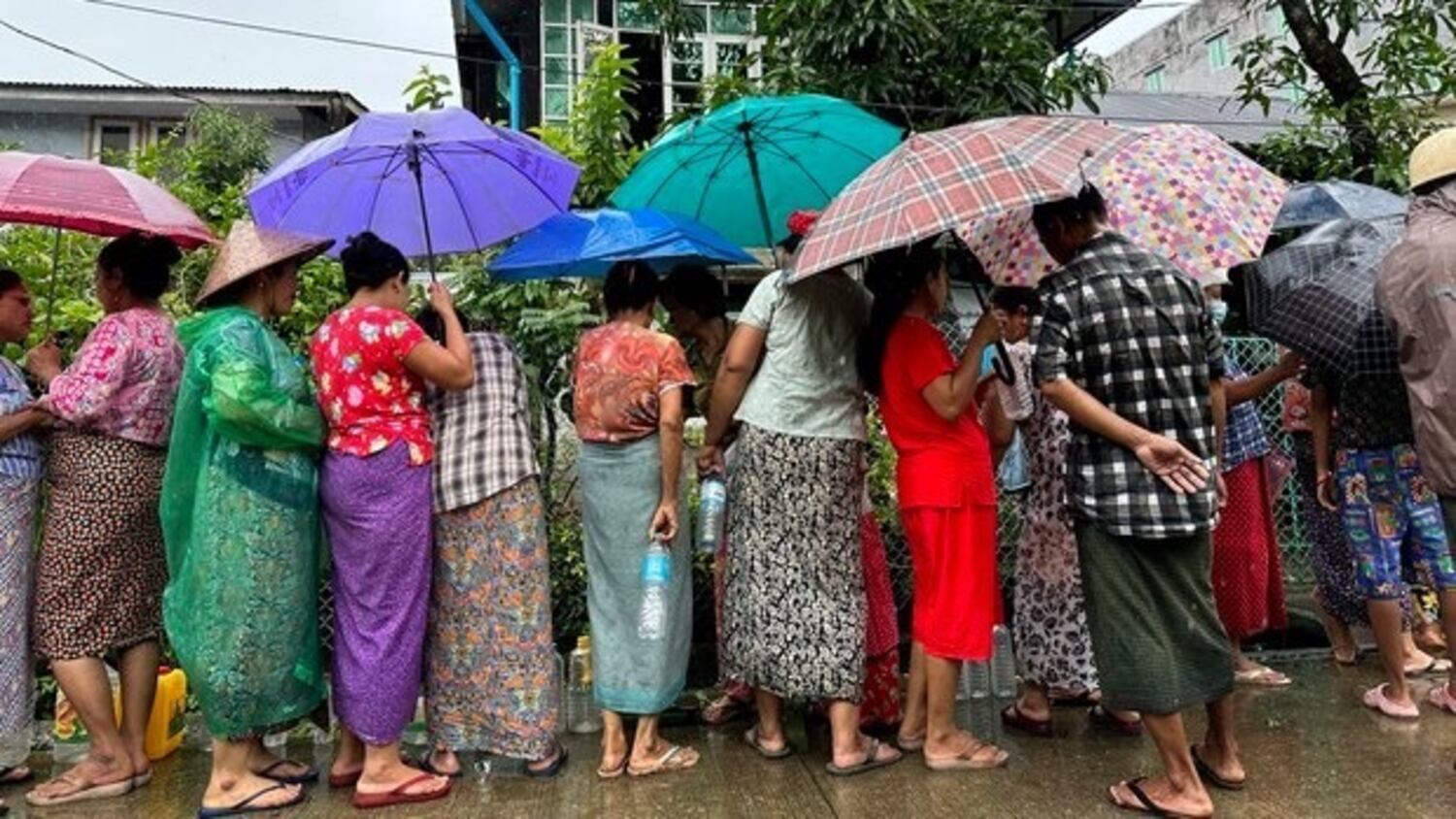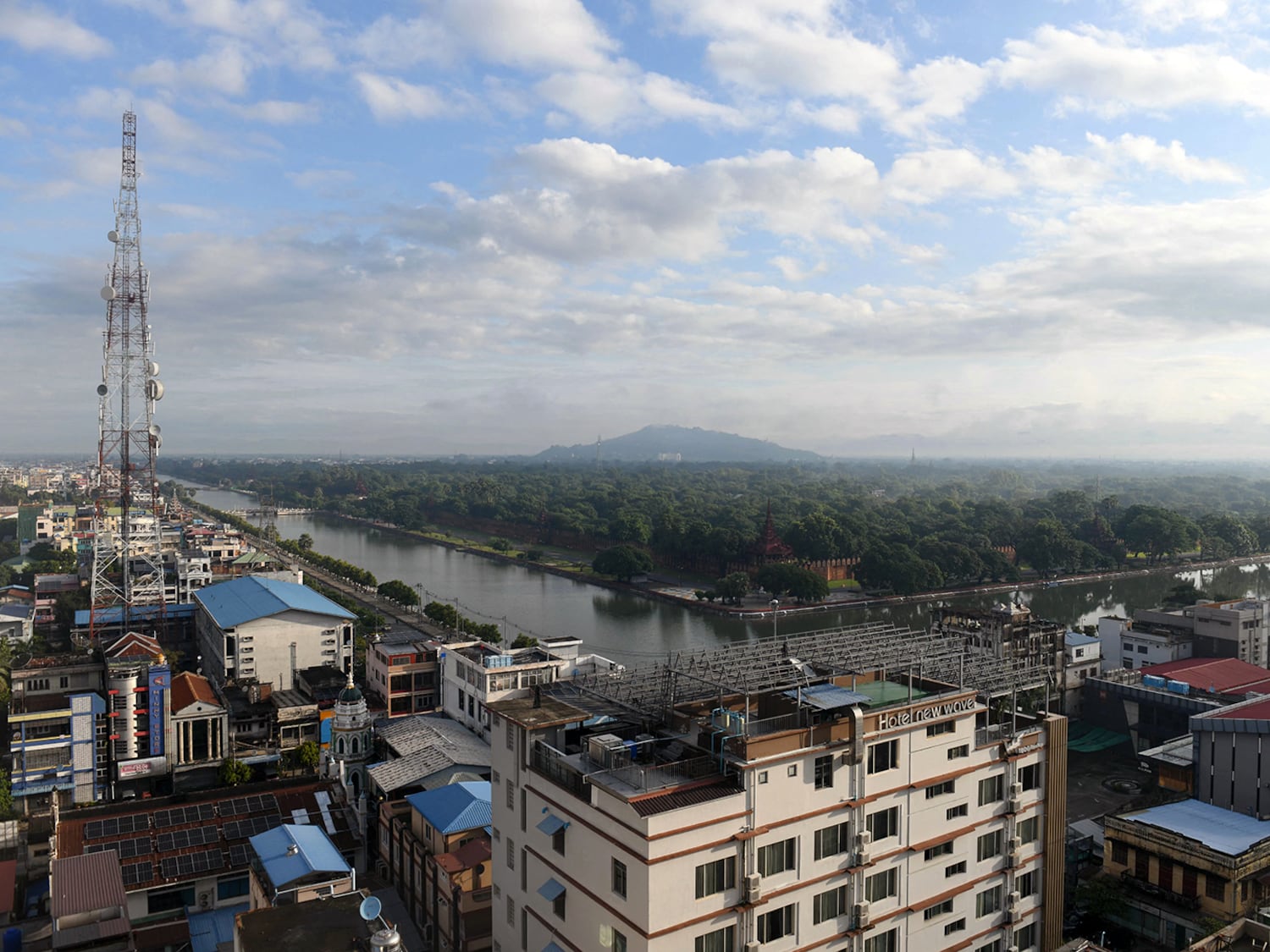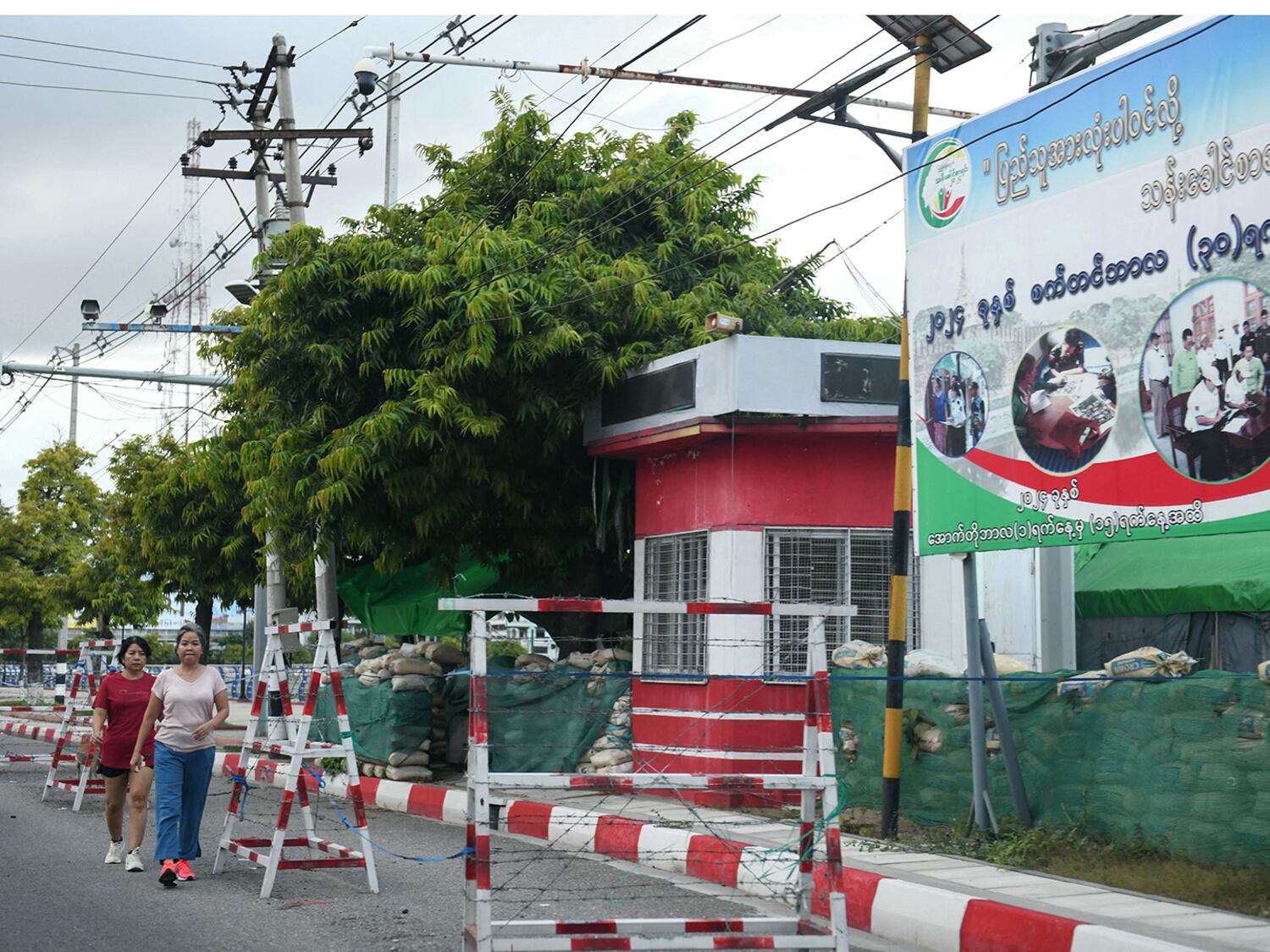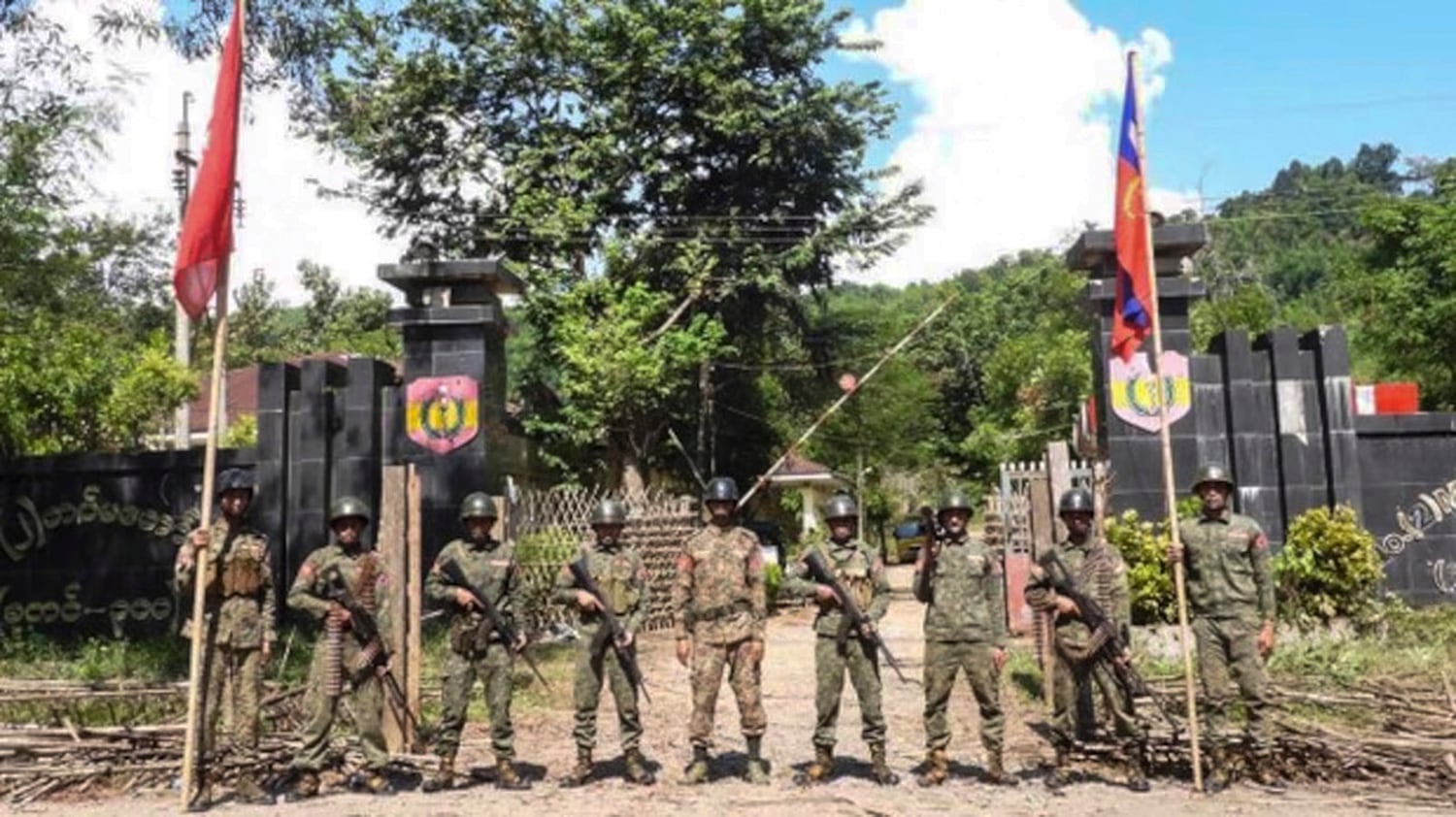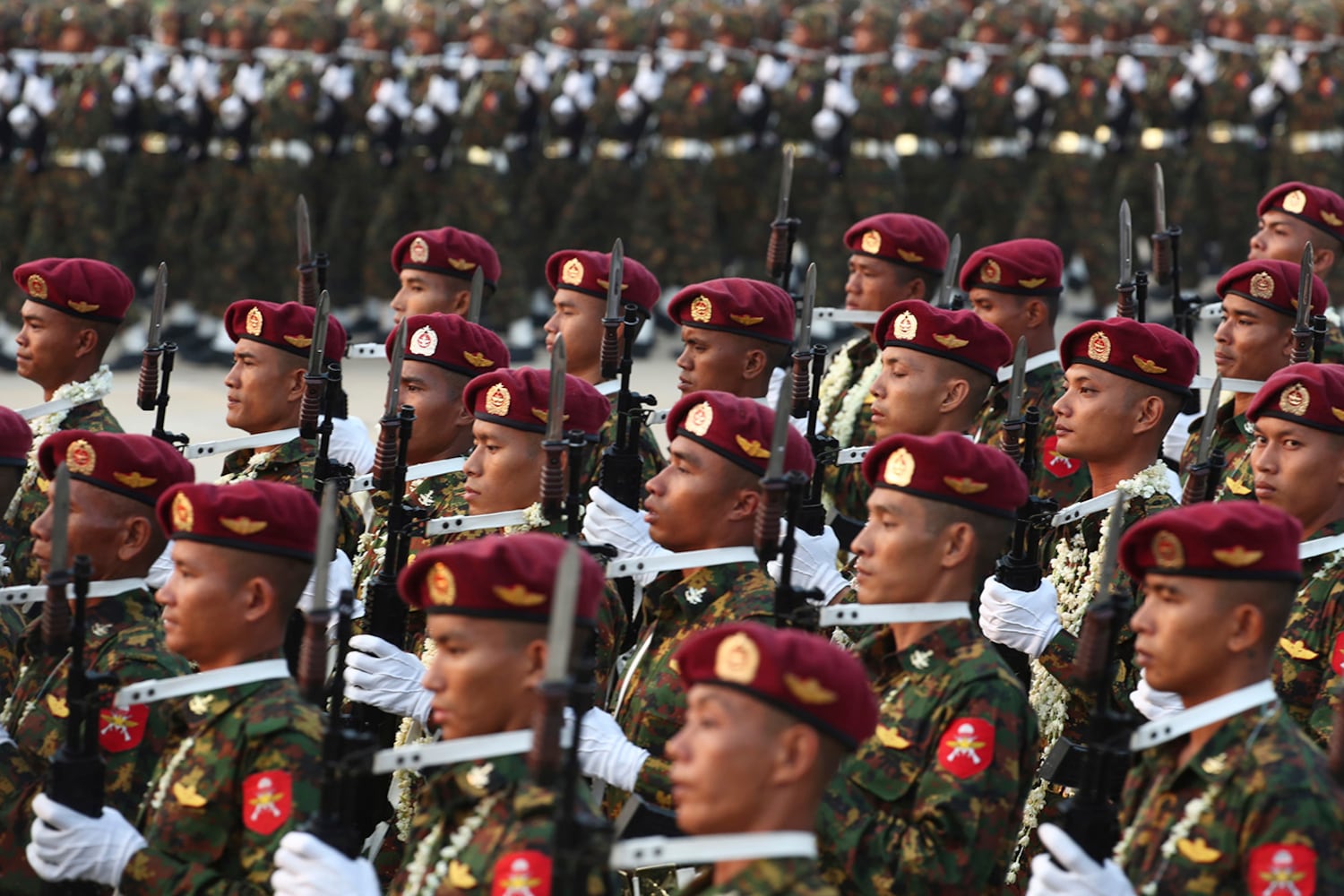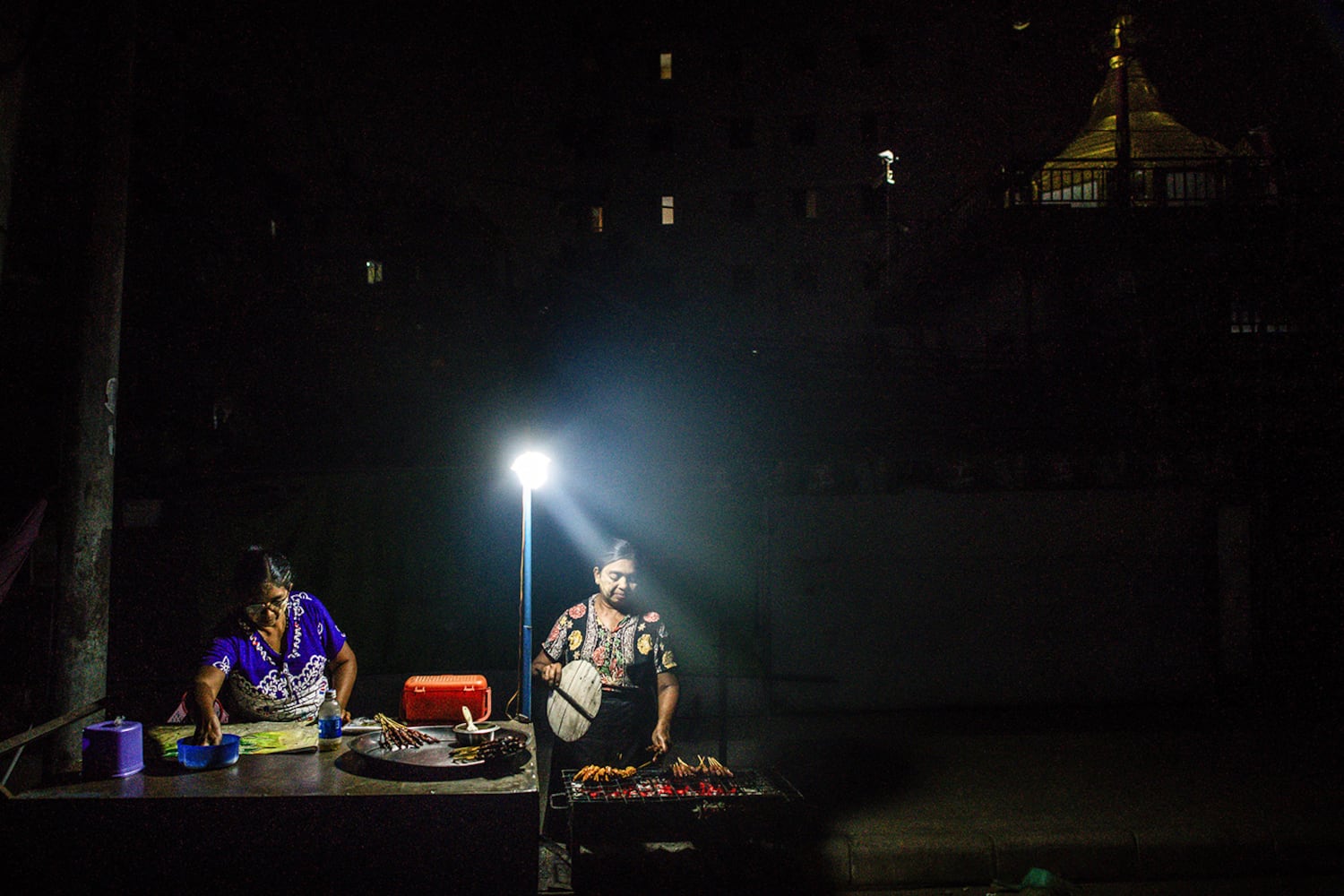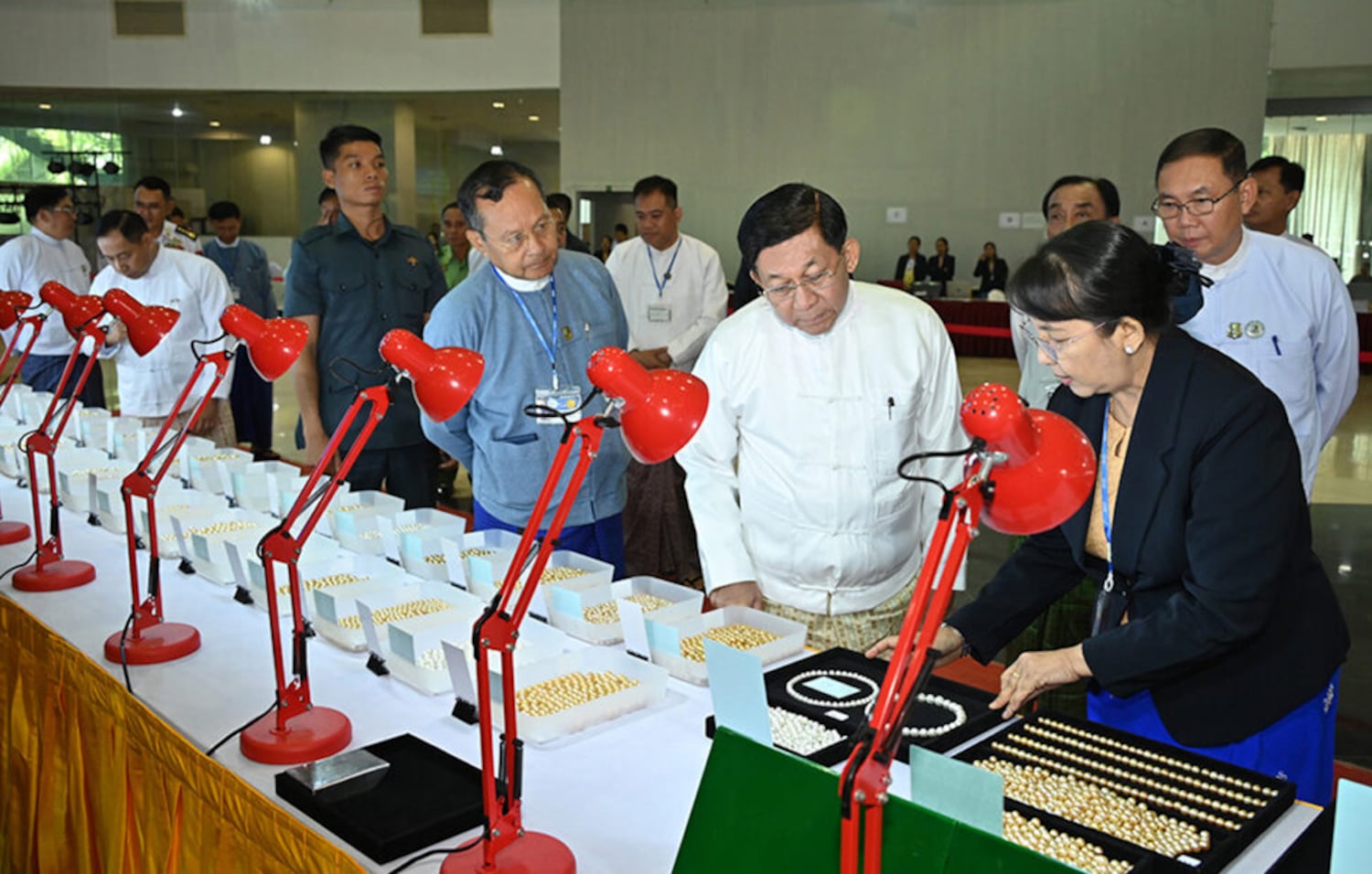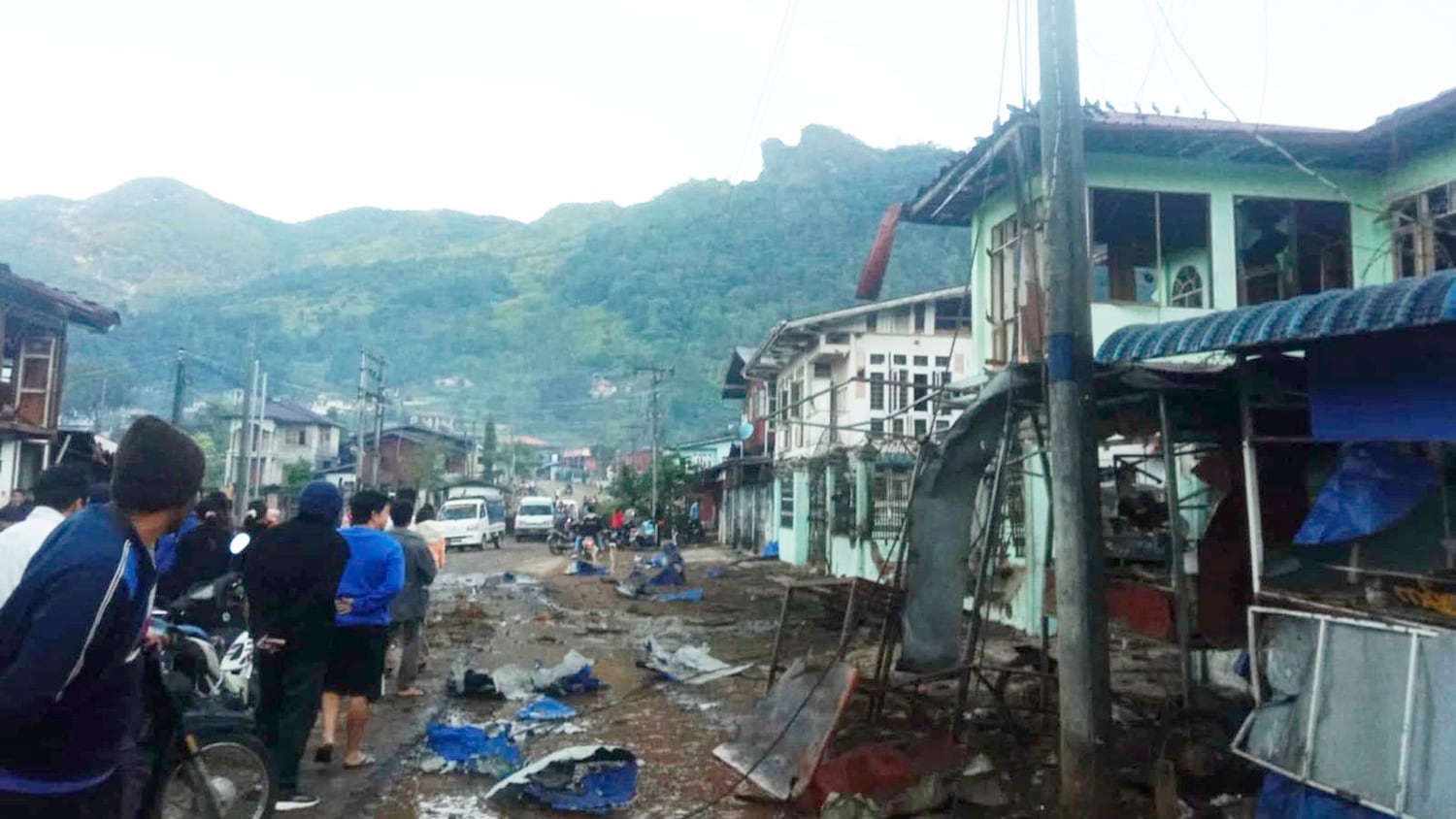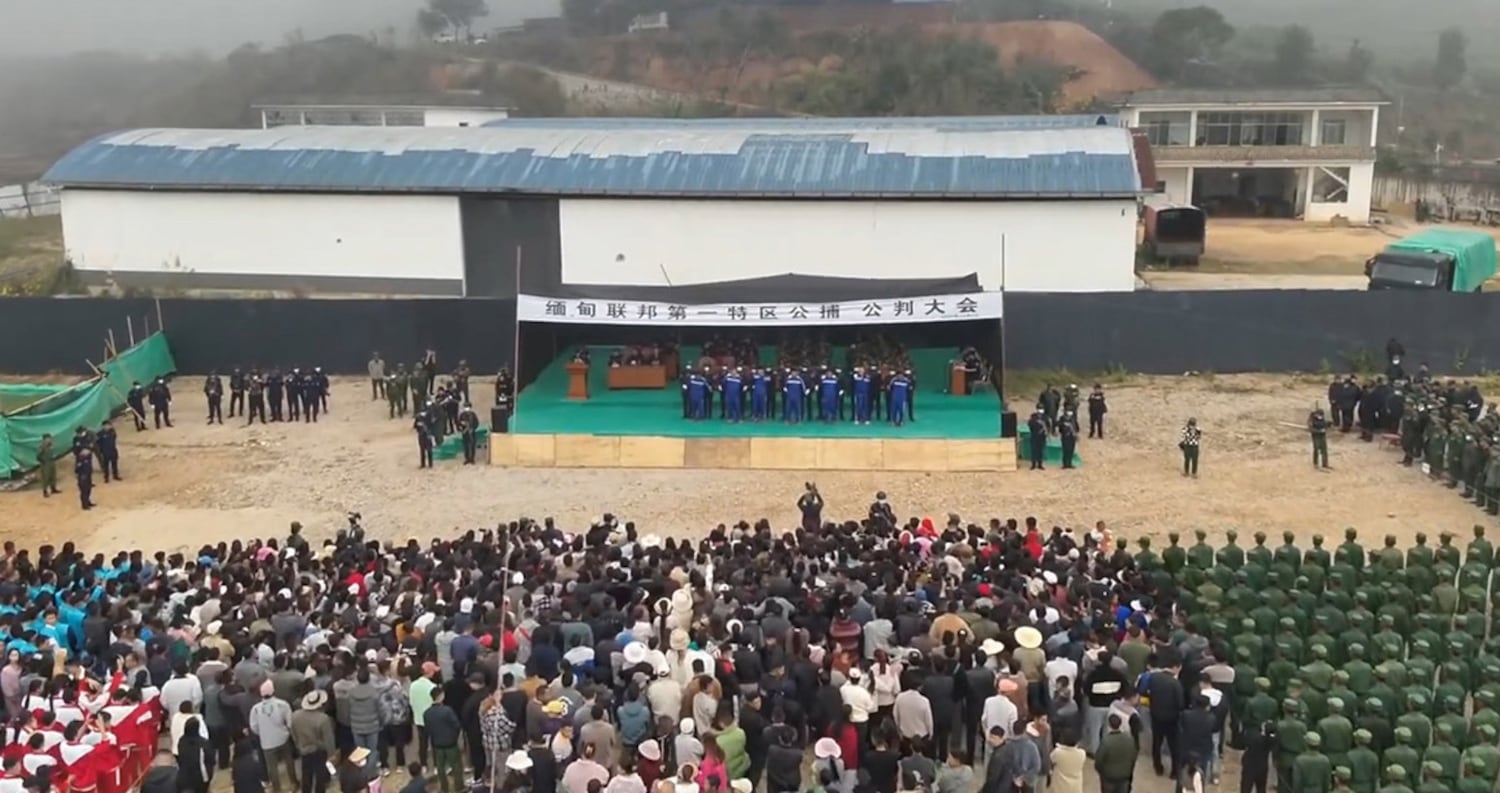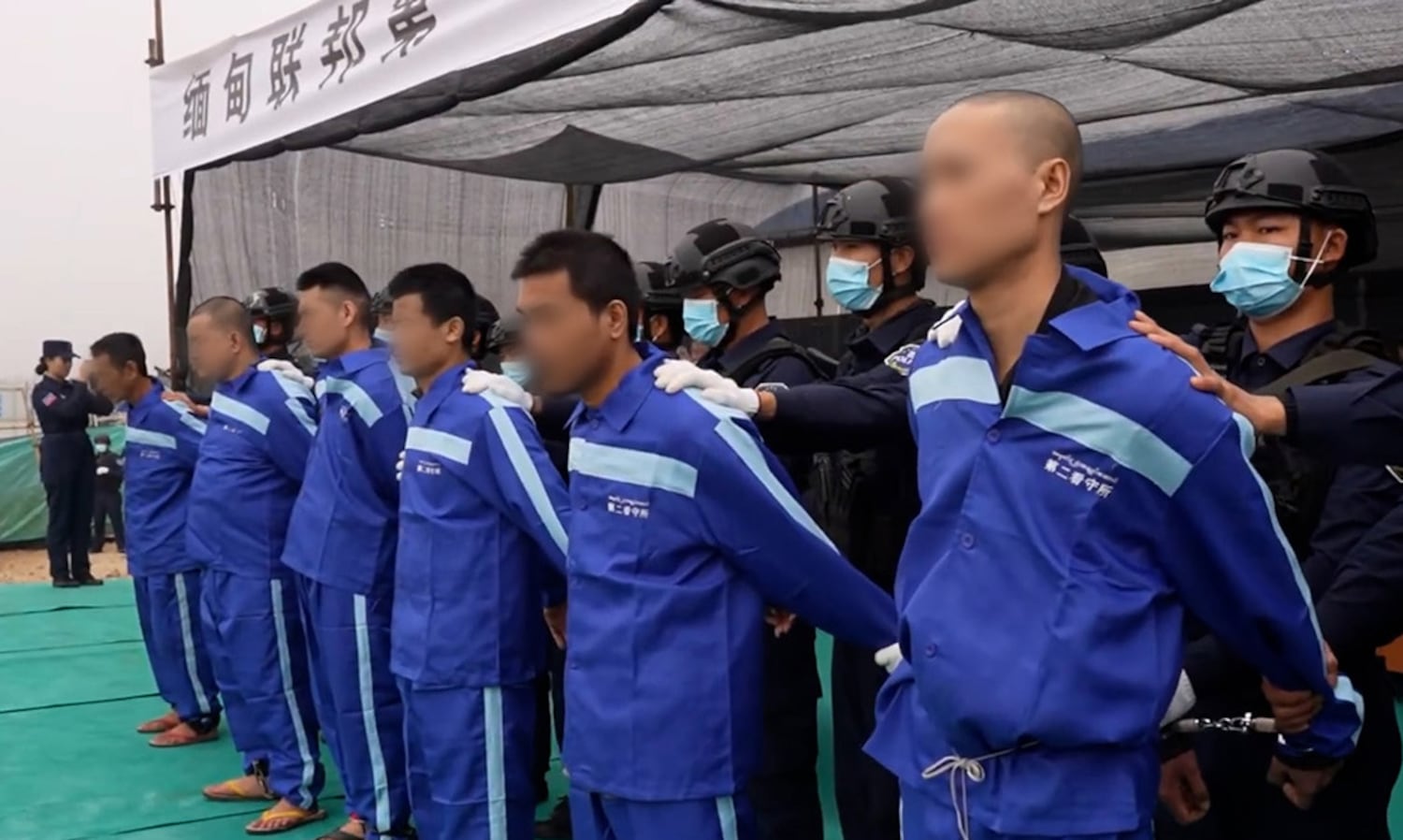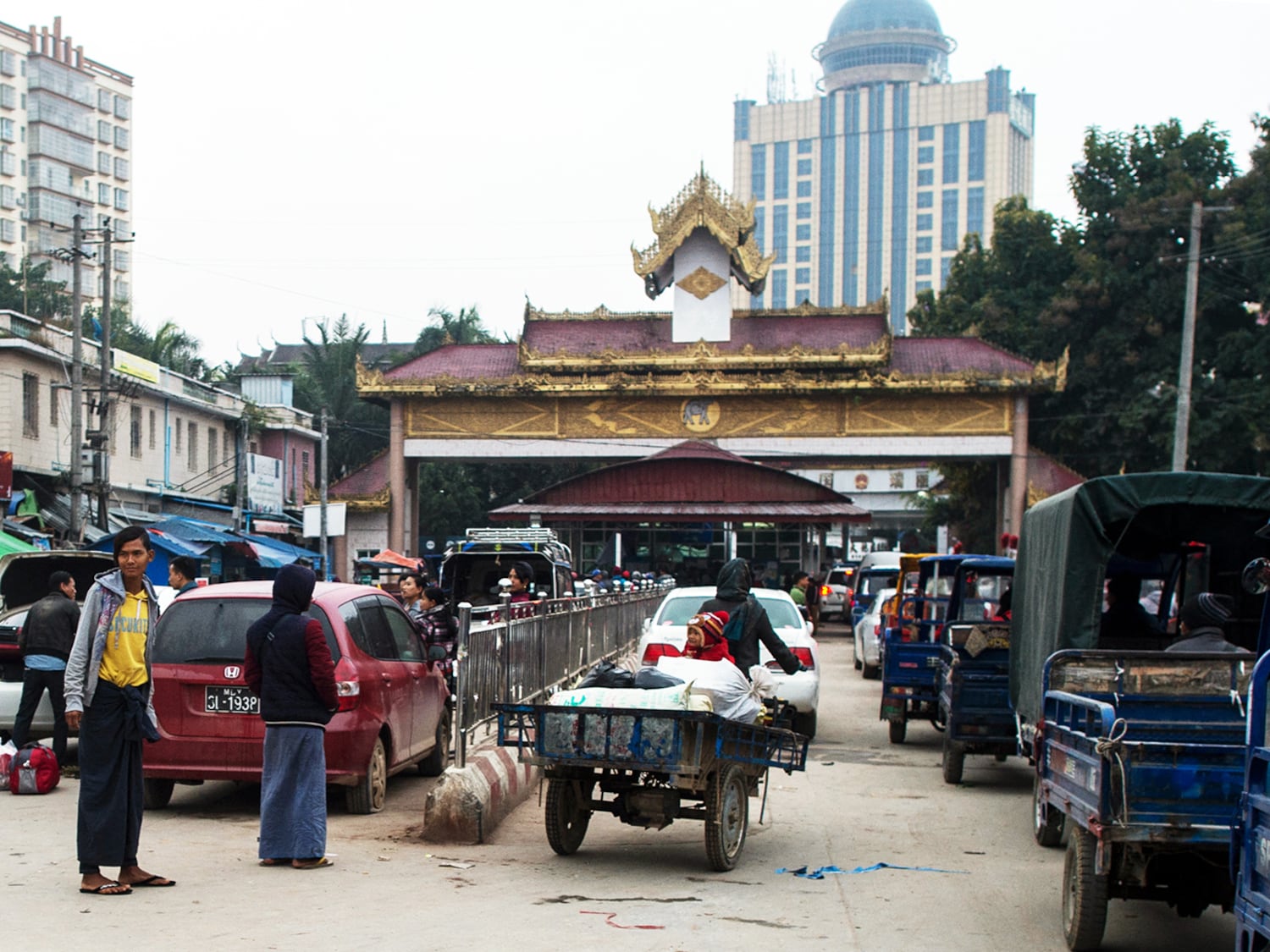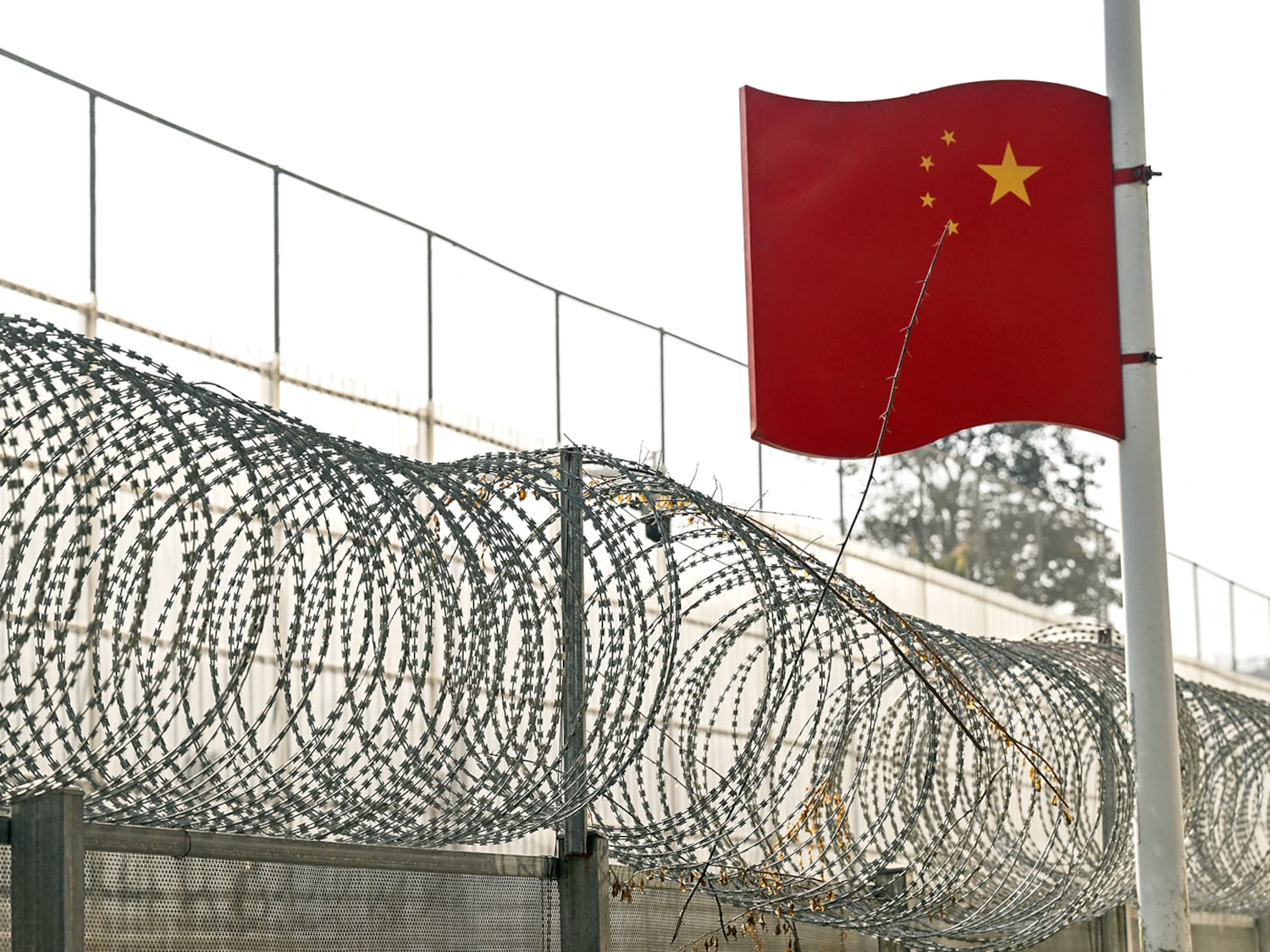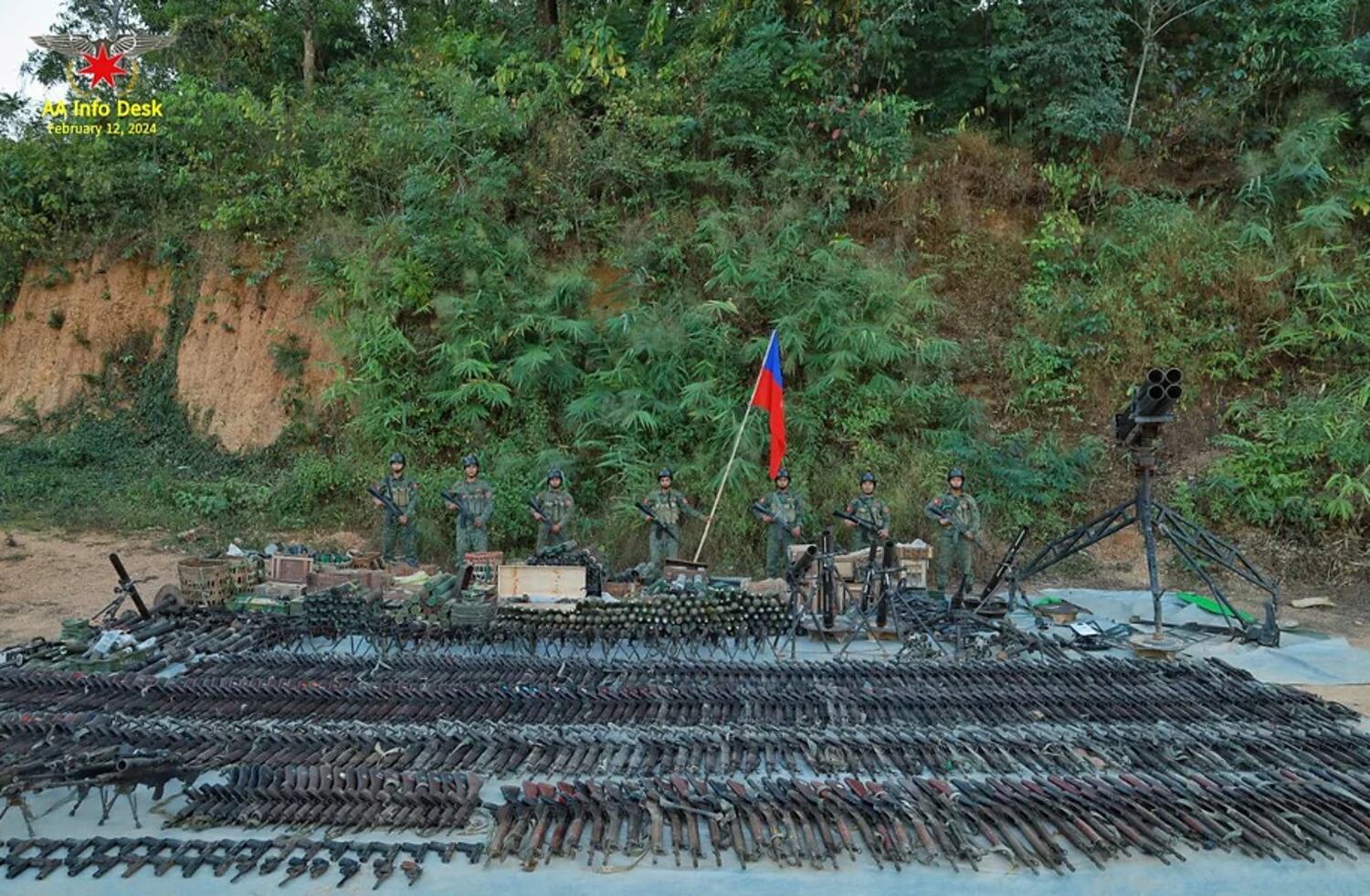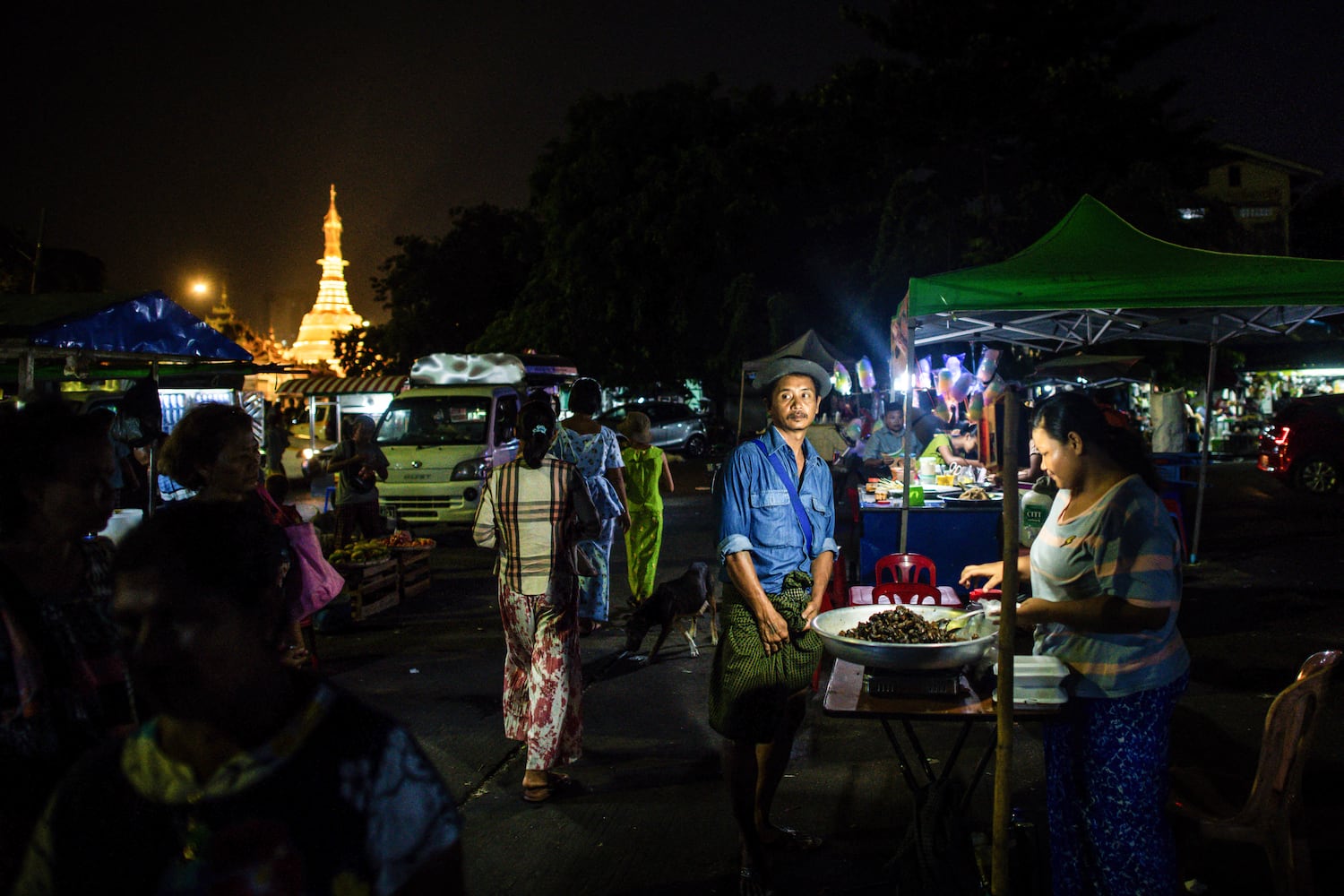Read RFA coverage of this topic in Burmese.
A video of disheveled Myanmar troops at a besieged border post is drawing anger toward junta chief Min Aung Hlaing who has lost control of the nation’s entire 270-kilometer (170-mile) border with Bangladesh for the first time.
The video shows dozens of junta troops sitting on the floor in a dark, cramped building, looking weatherbeaten and anxious. Windows and doors are barricaded with furniture and pieces of lumber, and sporadic gunfire is heard.
Now viral in Myanmar, the video was filmed Nov. 8, exactly one month before the anti-junta Arakan Army, or AA, overran the unit, known as the No. 5 Border Guard Police Battalion, which was stationed near Rakhine state’s Maungdaw township.
In doing so, the rebels seized the junta’s last post on Myanmar’s border with Bangladesh and arrested one of the highest ranking junta commanders in the state, No. 15 Military Operation Command leader Brig-Gen Thurein Tun, along with other prisoners of war. The rebels have claimed hundreds of junta troops were killed in the fighting.
The loss marks one of the biggest setbacks for the junta since the military assumed power in a February 2021 coup d’etat, and video of its troops holed up in a building pleading for reinforcements has enraged many of its supporters.
Trapped for 3 months
The troops appear varied in age — some with weathered looks and others fresh-faced, as if they might otherwise be in school. A few seem to be trying to sleep amid the chaos.
At one point, a soldier motions for the camera to be brought to him.
He expresses disgust over a lack of support from the junta leadership, noting that his unit — the No. 5 Border Guard Police Battalion — has been trapped in the building for three months, defending its outpost near Rakhine state’s Maungdaw township against an offensive by the anti-junta Arakan Army, or AA.
“We’ve been trapped since Aug. 4 and now it is Nov. 8,” he says. “We’ve heard nothing about a rescue plan for us. Intense fighting is going on daily, but no one has come out to help.”
The soldier says his battalion has “fallen into disarray” and that those trapped in the building are “all that remain of our forces.”
Another version of the video shows an overlay of Zaw Phone Hein, a member of the pro-junta People Militia Force — locally known as “Pyithusit” and by anti-junta activists as the pro-junta “Pyusawhti” — similarly expressing anger over the junta failing to help the battalion.
“What will you do for the rights of the fatherless and motherless children of the military personnel who lost their lives fighting your battles?” he asks.
RELATED STORIES
Myanmar rebels capture last military post on Bangladesh border
Arakan Army takes fight to Myanmar’s western command in bid to control Rakhine state
Myanmar’s Arakan Army captures Ann town, focus now on army HQ
The video has prompted a rare outpouring of frustration with Min Aung Hlaing’s leadership from junta supporters on the social media platform Telegram, with some raising questions about his management and administration, and others demanding his resignation.
Border post seized
The AA, which is fighting for self-determination, controls about 80% of Rakhine state – 10 of its 17 townships and one in neighboring Chin state.
In townships it does not control, it has pinned junta forces into pockets of territory, such as the state capital, Sittwe, a military headquarters in the town of Ann and the Kyaukpyu economic zone on the coast where China has energy facilities and wants to build a deep-sea port.
On Tuesday, the AA announced that it had overrun the No. 5 Border Guard Police Battalion after its defenders, including pro-junta militiamen from the mostly Muslim Rohingya community, abandoned the post and fled.
The AA said that it had killed “more than 450″ of an estimated 700 junta troops in battalion during the fighting for Maungdaw.
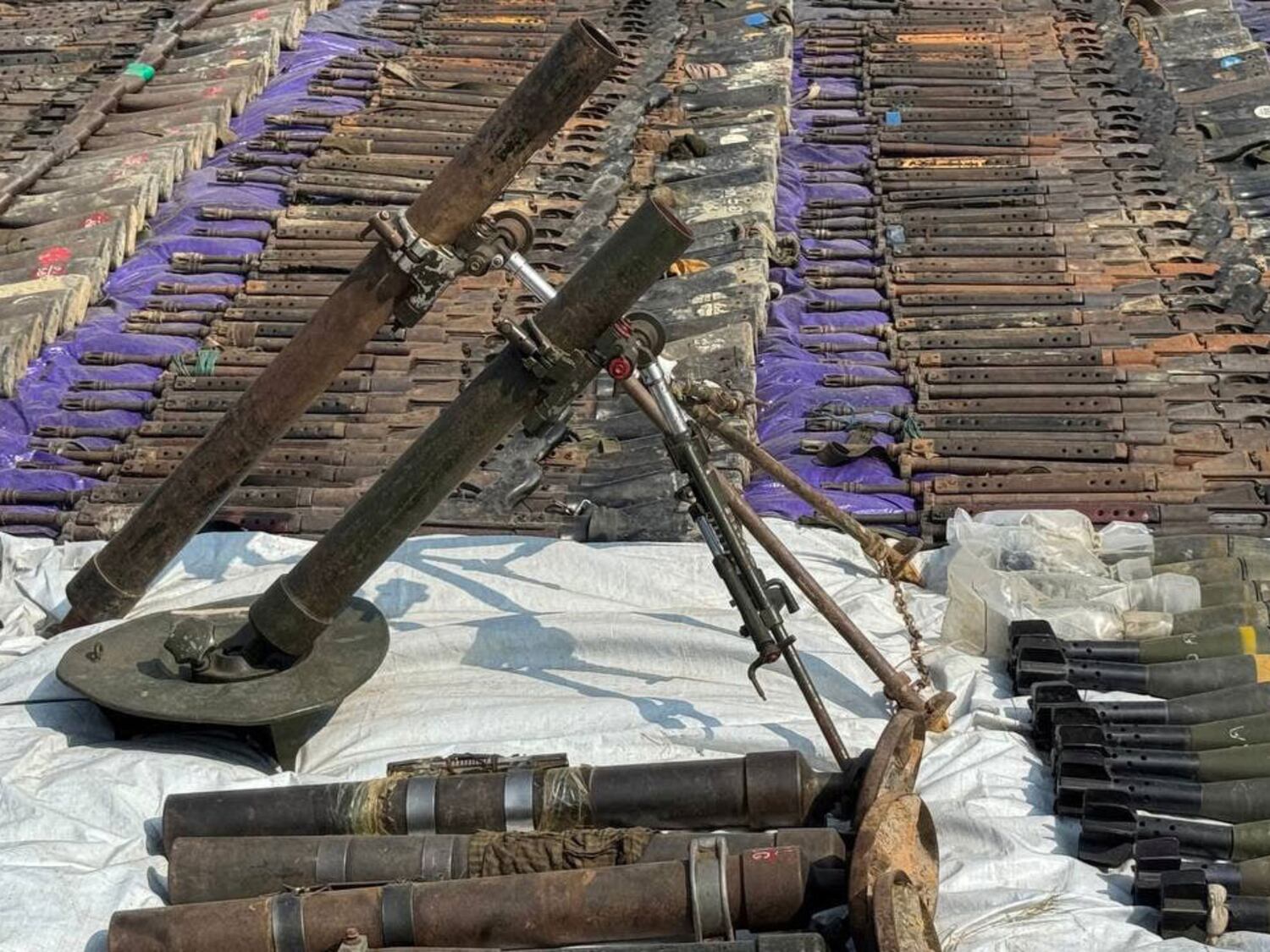
Speaking to RFA Burmese on Wednesday, AA spokesperson Khaing Thu Kha said that the dead “may include junta soldiers who were seen in a recent video pleading for help,” referring to the viral video.
He added that those captured are being “detained in accordance with laws governing the treatment of prisoners of war.”
“We have properly held all prisoners of war who voluntarily surrendered by raising a white flag, in accordance with the Geneva Convention and the AA’s rules and regulations,” he said. “But for those who committed war crimes [in Rakhine state], we will ensure fair justice based on the severity of the crimes that they committed.”
How will junta respond?
Observers told RFA that the video of the beleaguered soldiers and the response it generated from junta supporters could impact military strategy and lead to changes in the regime’s leadership.
Thein Htun Oo, executive director of the Thayninga Institute for Strategic Studies, a think tank formed by former military officers, said it was important to watch how the junta will respond.
“The military’s supporters and those on the ground … [will respond] based on their own belief and objectives, so we can say that there will be some impacts,” he said. “But [the junta leaders’] decision to address ongoing problems will depend on future plans.”
He said he intends to “closely monitor” the junta for signs that indicate how it will proceed.
Political commentator Than Soe Naing said the fallen No. 5 Border Guard Police Battalion could become “an example” for supporters of the military junta, noting that when the junta’s own backers are raising concerns, it could mean that “the last days of Min Aung Hlaing are approaching.”
“The recent incidents provide lessons for pro-junta forces and soldiers,” he said. “They will make them consider whether they should continue to support such a leader or remove him from power.”
With the AA focusing its attention on the military’s Western Command headquarters in Rakhine’s Ann township, experts say the entire state could fall under rebel control.
The junta has yet to issue a statement on the fall of Maungdaw, and attempts by RFA to contact its spokesman, Major General Zaw Min Htun, went unanswered by the time of publishing.
Translated by Aung Naing. Edited by Joshua Lipes and Malcolm Foster.
This content originally appeared on Radio Free Asia and was authored by RFA Burmese.
This post was originally published on Radio Free.

